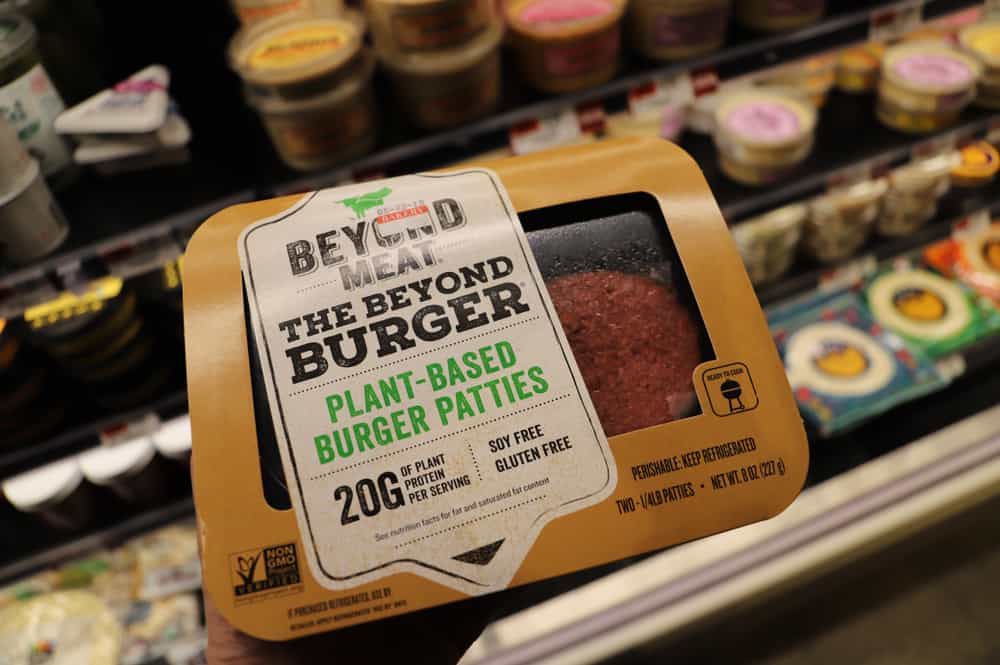Beyond Meat Inc., the plant-based meat production company, went public on May 1 at an initial public offering (IPO) share price of $25. However, the stock is up by over 200 percent since then and has turned out to be one of the greatest IPO launch success stories in the U.S. in nearly two decades. The rousing reception Beyond Meat has received reinforces the importance alternative meat holds in the future food market – estimated to cross $40 billion over the next decade.
Beyond Meat was founded to become an alternative to the current meat industry that sources all its meat from animals. The company produces its meat from plants, which apart from being a humane way to eat, will also reduce the carbon footprint and positively impact human health. Beyond Meat products can now be bought across the U.S. in a variety of restaurants and outlets, and in chains like Whole Foods and TGIF.
Beyond Meat has never shown profit and is banking on seeing the alternative meat market grow into a multibillion-dollar market in the future. But unlike Lyft, that made its IPO this March and has seen its share value tumble ever since, Beyond Meat’s stock went ballistic, recording one of the best-ever opening days of an IPO in the U.S., rising 163 percent from its base price of $46 per share.
The answer to the difference in fortunes lies in the target market and the potential it holds in the future. Uber and Lyft fall under the on-demand cab hailing market that heavily depends on the gig economy, employing thousands of drivers as independent contractors. Drivers take up the bulk of the revenue, with their share in the pie remaining roughly constant even when the company expands to new markets or scales up its business.
The only realistic way for cab hailing companies to make a profit is when they cut out their biggest cost – drivers. This is easier said than done, as companies in the business have slowly realized that fully autonomous vehicles are at least a decade away from being commercially deployable. On the other hand, the alternative meat industry has a more workable roadmap to breaking even, which can happen when companies scale up operations and achieve economies of scale.
The alternate meat market is of particular interest to the freight industry, because like every other food produce, a major portion of the livestock and processed meat tonnage is hauled in trucks. And as long as the meat comes from real livestock, they have to be hauled from the farms to the abattoirs and then from the abattoirs to the processing stations, where the meat is packed and sent to distribution centers or directly to supermarkets and restaurants.
Lab-grown meat eliminates much of the hauling process, as plant-based meat companies can produce and package their meat at the same location. Lab-grown meat has been a viable alternative and commercially available since 2018, and is expected to bite into a significant share of the meat market by 2021. The demand levels have been rising as well, with one-third of consumers in a survey stating that they would pick lab-grown meat if given a choice.
Within the meat industry, there has been a great deal of disagreement between companies that rear livestock and the startups that grow meat in laboratory petri-dishes, as they eye each other as businesses out to wreck their respective markets. Meanwhile, livestock growers have met with the U.S. Food and Drug Administration (FDA) to register their displeasure at lab-grown meat being categorized in a similar manner to conventional meat.
The ranchers and farmers believe that this misleads consumers, as lab-grown meat comes from plant tissue and not animals. Alternative meat companies argue that though lab-grown meat is not quite the same as conventional meat, it fundamentally is the same in terms of taste, look and nutrition, and thus should not be differentiated.
The packaging debate is not likely to be doused anytime soon, but it is time to consider the repercussions of a growing alternative meat industry on the freight hauling market. The agricultural industry accounts for 31 percent of the total ton-miles of freight moved, with trucks moving 95 percent of all livestock within the U.S., according to the Transportation Research Board. If lab-grown meat eats into the livestock industry, it would mean fewer ton-miles, and the trucking industry would have to contend with lower revenues from the agriculture and livestock industry – which currently accounts for 18 percent of trucking industry revenue.












Kaytee
You seem to be we confused about what clean meat is. Beyond meat and Impossible meat are not clean meats. They are meat alternatives- made from plants. Clean meat is real meat grown from animal cells in a laboratory. These are two completely different products as one is actual animal flesh and the other is plants. You have used the term clean meat incorrectly throughout this article as you are actually referring to meat alternatives.